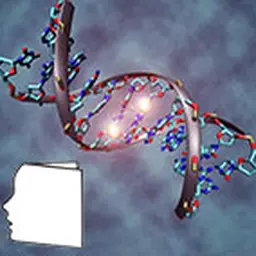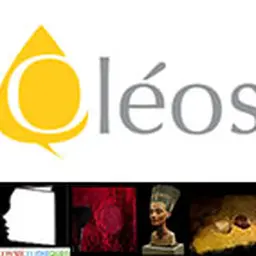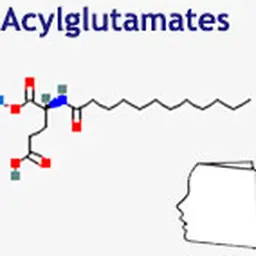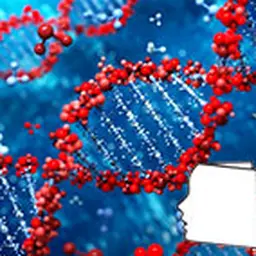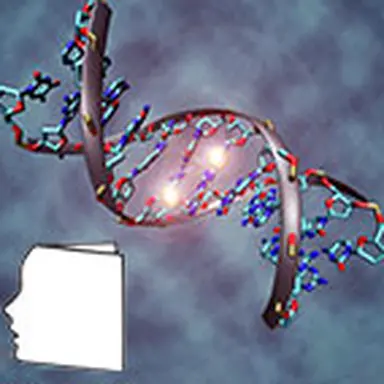
The Cosmetotheque® is not intended to be a technical and scientific watch, and that is why we only talk about research fields when ingredients appear. Epigenetics is becoming a hot topic in the world of cosmetics, and we see many initiatives in this field. Ingredients have recently appeared at several suppliers, in particular Mibelle and Silab.
It is therefore time to take stock of recent developments as 2015 and 2016 will be the first years of this concept. By leaving a mood post published in 2012 and which was first and foremost an alert, then with the help of the company Mibelle through its R&D manager Fred Zülli and relying on a excellent popularization document published by Silab, we discuss here the most recent concepts in this field. Then, in a second step, we will discuss two recent developments. Next step!
Jean-Claude Le Joliff
From epigenome to exposome
This document has been published in November 2012 .
The more knowledgeable will probably have noticed this information," First Epigenome in Europe Completed "that the full epigenome has been described. Of course, as is often the case in biology, this mainly concerns pathological conditions and studies on more complete cases will take time, but this"article" will take time. Our diet would affect our grandchildren's DNA "It is more public and therefore more popular. If we refer to older examples, we must expect paradigm shifts.
As a reminder, epigenetics (epi, outside, and genetics) is the field that studies how the environment and individual history influence gene expression, and more precisely the set of changes, transmissible from one generation to the next and reversible, of gene expression without alteration of nucleotide sequences (of DNA itself). The existence of these phenomena governing gene expression can be summed up in Thomas Morgan's initial question:"…. If an individual's traits are determined by genes, why are not all cells in an organism the same? ".
More strikingly, we can recall that a caterpillar and its butterfly have exactly the same genes. In the course of development, therefore, programming through epigenetic processes could be added to the genetic heritage, itself under the influence of a multitude of environmental factors, themselves having an impact at the cellular level. Another example is the set of differences between identical twins: their genome is identical, but if they live in different environments, the expression of it will differ.
The epigenome is therefore the epigenetic state of the cell. Like embryonic cells which can have several final functions, a single genome can be modified in multiple ways to give different epigenomes, resulting in the formation of cells of different shape and function. A recent study (cited on My Science Work) shows that the epigenome of newborns is different from that of the elderly. These changes, unlike those in DNA, would be reversible. Via the epigenome, the environment in all its forms, or almost, seems to be able to be translated into gene expression modulation.
Genetics, which has been in the news in recent years, has long been regarded as a sort of culmination in the field of research. Cosmetics was no exception to this approach. Few teams have really taken an interest in this approach and there are not many publications on skin. But the process continues and many active ingredients are now being tested using proteomics or transcriptomics techniques. At In-Cosmetics 2011, a company proposed an active tested on… 23 000 genes !
So we are still in the middle of the river, and a new wave of data arrives: Epigenetics and Epigenome.
These new advances will undoubtedly offer very interesting avenues for reflection because our businesses are extremely concerned by this approach: aren't environmental stresses epigenetic factors, such as pollution or food? Skin colour would itself be determined by these ancient epigenetic changes. Etc. And isn't the skin the main marker of the effects of this environment?
This will also update old concepts that we thought were too old, such as HSPs that we had quickly put away, or sirtuins that had taken an interesting place before being relegated to the rank of old things under the impulse of stem cells, which have taken everything away in recent years, and have become a sort of fashion of unique thinking.
We are just beginning to understand how genes determine the skin phenotype and we will need to look at the epigenome and perhaps the exoposome, the science of systematically studying the effects of the environment and their exposure, which should lead in the medical field to the creation of predictive medicine according to our living environment.
Of course, we will have to learn new words: interactome, methylome, régulome… in addition to those that we had already had trouble remembering, but a very exciting era is beginning. Younger people are lucky to see biological concepts evolve at such a speed. Certainly,"epiphenomena" (regulation?) will not make it all rosy, but the field of creativity opens up in a formidable way.
Long live science too!!!!!!
To go further - See the article First Epigenome in Europe Completed on Science Daily - See the article Our diet would affect our grandchildren's DNA on the L'Express website - See the article Epigenetics on Wikipedia - See the article What is epigenetics? on the Epigenome Network of Excellence website - See the article Newborns and centenarians differ by epigenoma on Futura Health - See the article From epigenome to exposome on the website of the Swiss Medical Journal
Jean-Claude Le Joliff
Epignetic: genes don't determine everything!
by Fred Zülli - Mibelle Biochemistry
Our genes influence our health and it is they that we pass on to our children. However, recent epidemiological studies have shown that genes are only part of the"equation".
We have long known that unbalanced nutrition, stress and lack of exercise affect our health. However, a new scientifically proven fact: the negative effects of such a way of life can be transmitted to our offspring. Until this discovery, it was assumed that this type of information acquired during life was not coded in our genes and was therefore not transmissible.
Scientists attribute this phenomenon to the epigenetic modification of our genetic material (genome). Indeed, epigenetic modifications are materialized by a biochemical marking of our DNA which will induce the activation or on the contrary the deactivation of a gene. This is why, for example, an unbalanced diet in parents can lead to epigenetic changes leading to an increased risk of diabetes in their children, even if the latter have a balanced diet.
Environmental factors and age
Monozygotic twins share exactly the same genetic material, hence their perfect resemblance when they are children. However, with time, differences appear because the environment in which they evolve generates different epigenetic marks.
In pregnant women, environmental stress, such as smoking for example, can affect three generations: the mother, the unborn child and if the latter is a girl, the grandchild, because the unborn child already has eggs.
Molecular epigenetic mechanisms
Our DNA is composed of 3.2 billion base pairs grouped in the core of 23 chromosome pairs per cell. However, only about 23,000 genes code for proteins, which represents only 2% of our DNA. The remaining DNA was initially called"junk DNA", but we now know that these non-coding DNA sequences have important functions. In particular, they help the genome to adapt to our wider environment.
Epigenetic modifications are one example. To date, three key mechanisms have been identified: 1. DNA methylation (addition of methyl groups to DNA), 2. Histone modification (biochemical modifications of histones which are proteins around which DNA is wrapped), 3. Production of microRNAs (short nucleotide chains that regulate gene expression).
These three mechanisms can activate or suppress genes in response to environmental factors such as diet, sport, stress or air pollution. These epigenetic changes in DNA can be transmitted to daughter cells and offspring, or disappear as a result of a significant change in the environment and lifestyle.
Epigenetics and cosmetics
As a biochemist at Mibelle Biochemistry, I am necessarily interested in the link between skin aging and epigenetics. Unfortunately, there are still very few studies in this area. However, chronic exposure to air pollution, UV rays and other external stressors are known to accelerate skin aging. Even if these stress factors are eliminated, skin cells have undergone epigenetic changes, some of which are permanent and will persist even if the signal that induced them disappears.
This is why the search for active ingredients capable of normalizing negative biochemical markers and thus counteracting the aging process of the skin has already been part of our work for several years.
Our research has led us to focus on the development of bees, and in particular that of the queen. In bees, workers differ from queens in many ways such as appearance, longevity and behaviour, even though they share exactly the same DNA. The queens' longer life span is explained by the presence of epigenetic marks on their DNA. These marks result from the diet of the larvae intended to be queens, which consists exclusively of royal jelly, while the future workers are fed with pollen. The analysis of the composition of royal jelly has enabled us to develop a new peptide capable of having positive effects on the regeneration of the skin and on the homogeneity of the complexion.
We are also studying how epigenetic changes caused by aging and environmental stress affect the skin. We hope that our findings will help develop a way(s) to protect the skin from these negative effects and reduce epigenetic reprogramming that has already occurred.
To complete these explanations and understand this new concept, we can watch with interest the presentation film prepared on this theme by the company Silab by following this link .
Fred Zülli
The ingredients
RoyalEpigen P5
®
Inspired by epigenetic science, RoyalEpigen P5 was developed to delay skin aging. Indeed, lifestyle and environmental factors have an impact on the epigenome of skin cells and therefore influence their vitality. This revolutionary active mimics the function of royalactin, a protein recently discovered in royal jelly and which is responsible for the epigenetic programming of queens in the hive.
RoyalEpigen P5® was developed from a biologically active peptide that mimics the function of royalactin. This peptide has been incorporated into a vectorization system to ensure optimal bioavailability.
RoyalEpigen P5® accelerates skin regeneration for smoother skin, activates the cellular recycling process and reveals a more even complexion.
- INCI : Pentapeptide-48 (and) Hydrogenated lecithin (and) Glycerin (and) Butyrospermum parkii (Shea) butter (and) Phenethyl alcohol (and) Ethylhexylglycerin (and) Maltodextrin (and) Aqua/Water.
- Manufacturer : Mibelle Biochemistry.
Epigenomyl®
Epigenomyl® is a natural anti-aging active ingredient, whose mode of action is to revitalize the epigenome, i.e. all the mechanisms regulating gene expression that is weakened by external aggressors and age.
Through its global action, Epigénomyl® stimulates the mechanisms involved in epigenetic regulation: modification of histones and expression of the miRNAs concerned. Epigenomyl® normalizes the synthesis of pro-collagen and preserves the organization of elastin fibers and fibrillin. Rich in oligosaccharides from the calendula flower, Epigénomyl® improves skin microrelief, reduces wrinkles and improves skin tone. Epigénomyl® limits the signs of skin aging and improves the perceived age in 100% of volunteers. Because 80% of our skin's aging is linked to our environment, Epigénomyl® is recommended for all anti-aging skin care.
- INCI : Calendula officinalis flower extract.
- Manufacturer : Silab.
| This contribution was prepared by Jean-Claude Le Joliff with the precious help and contribution of the Silab and Mibelle Biochimestry teams. We thank them warmly. A biologist by training, Jean Claude Le Joliff was a man of R&D for many years. Successively in charge of R&D, then of Research and Innovation in a large French group of cosmetics and luxury goods, and after an experience of setting up a research centre (CERIES), he turned to innovation management. He has also been an Associate Professor at the University of Versailles Saint Quentin (UVSQ) and remains in charge of courses in the framework of several specialized courses: ISIPCA, IPIL, ITECH, UBS, UCO, SFC, etc. He is the founder of inn2c, an R&D and innovation consulting company. Consultant for several international companies, he has actively participated in projects such as Filorga, Aïny, Fareva, and many others. He created the Cosmétothèque®, the industry's first conservatory of crafts and know-how. |

